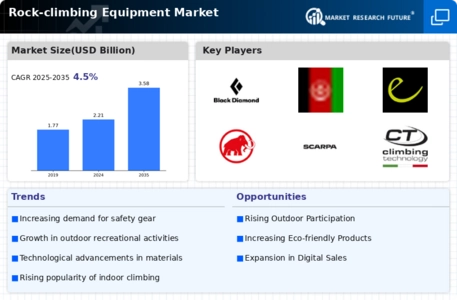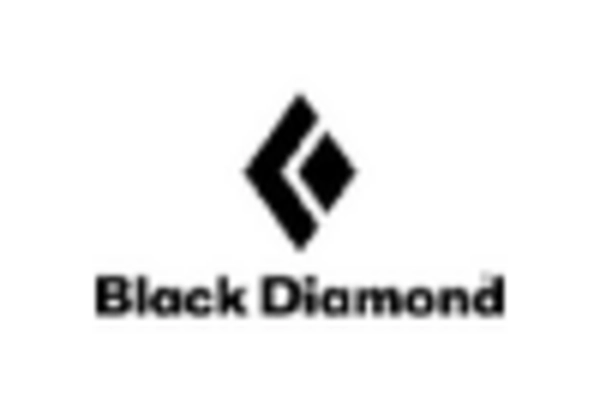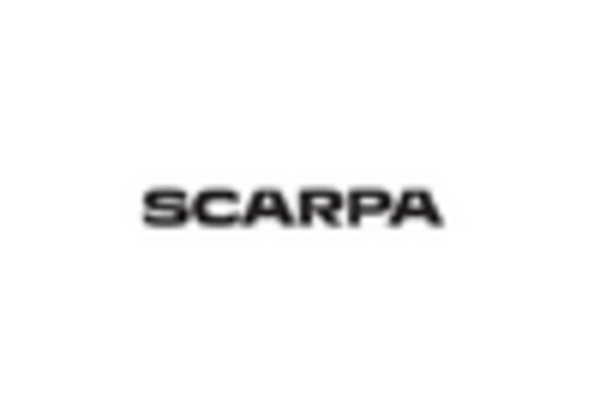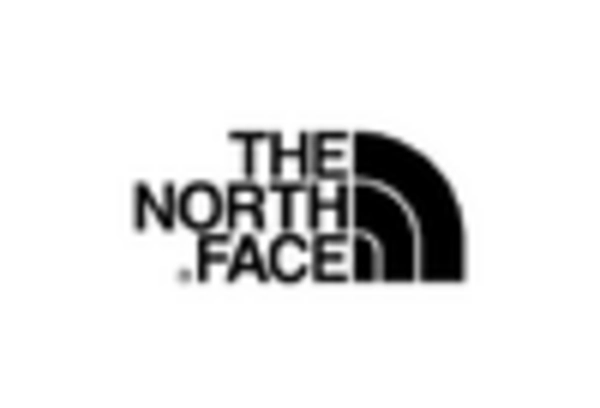Rise of Eco-Conscious Consumerism
The Rock-climbing Equipment Market is witnessing a shift towards eco-conscious consumerism, as climbers increasingly prioritize sustainability in their purchasing decisions. This trend is reflected in the growing demand for environmentally friendly climbing gear, such as products made from recycled materials or those produced through sustainable practices. Market Research Future indicates that approximately 25% of consumers are willing to pay a premium for eco-friendly equipment. This shift not only influences purchasing behavior but also encourages manufacturers to adopt sustainable practices in their production processes. As the awareness of environmental issues continues to rise, the Rock-climbing Equipment Market is likely to adapt, offering a wider range of sustainable products to meet the expectations of environmentally aware consumers.
Expansion of Indoor Climbing Facilities
The proliferation of indoor climbing facilities has a profound impact on the Rock-climbing Equipment Market. These facilities provide accessible environments for individuals to engage in climbing, regardless of weather conditions. The number of indoor climbing gyms has increased by approximately 40% in the last five years, attracting a diverse demographic of climbers. This growth not only introduces new participants to the sport but also drives demand for climbing equipment, as gym-goers often seek to purchase their own gear. The rise of indoor climbing facilities suggests a sustained interest in the sport, which in turn supports the Rock-climbing Equipment Market by creating a steady stream of consumers eager to invest in quality climbing gear.
Growth of Climbing Competitions and Events
The Rock-climbing Equipment Market is significantly influenced by the increasing number of climbing competitions and events worldwide. The rise of competitive climbing, including bouldering, lead climbing, and speed climbing, has garnered substantial media attention and public interest. Recent statistics reveal that participation in climbing competitions has increased by over 30% in the last three years. This growth not only elevates the profile of the sport but also drives demand for specialized equipment tailored for competitive climbers. As more athletes seek to enhance their performance, the Rock-climbing Equipment Market is likely to see a corresponding increase in sales of high-performance gear, such as competition-grade climbing shoes and chalk. The ongoing expansion of the competitive climbing scene suggests a promising outlook for the market.
Increased Participation in Outdoor Activities
The Rock-climbing Equipment Market experiences a notable surge in demand as more individuals engage in outdoor activities. This trend is driven by a growing awareness of health and wellness, alongside a desire for adventure. According to recent data, participation in outdoor sports has increased by approximately 20% over the past five years. This rise in outdoor enthusiasts directly correlates with the need for high-quality rock-climbing equipment, as safety and performance become paramount. As more people seek to explore natural landscapes, the Rock-climbing Equipment Market is poised to benefit from this influx of new climbers, who require gear ranging from harnesses to climbing shoes. The increasing popularity of outdoor activities suggests a robust future for the market, as it adapts to meet the evolving needs of a diverse consumer base.
Technological Advancements in Equipment Design
Technological innovations play a crucial role in shaping the Rock-climbing Equipment Market. Recent advancements in materials science have led to the development of lighter, stronger, and more durable climbing gear. For instance, the introduction of advanced synthetic materials has improved the performance and safety of climbing ropes and harnesses. Market data indicates that the demand for high-tech climbing gear has risen by 15% annually, reflecting consumers' preferences for equipment that enhances their climbing experience. Furthermore, the integration of smart technology, such as wearable devices that monitor climbers' performance, is likely to attract tech-savvy individuals to the sport. As these innovations continue to emerge, the Rock-climbing Equipment Market is expected to evolve, catering to the needs of both novice and experienced climbers.


















Leave a Comment